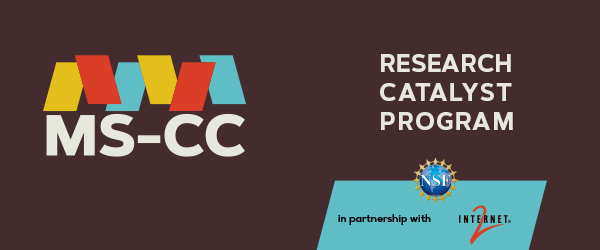Selection Criteria for the Research Catalyst Program

1. Eligibility and Alignment with Program Objectives
- Institutional Eligibility
The Principal Investigator (PI) must be from an HBCU or TCU. Proposals should confirm affiliation with an eligible institution. - Program Fit
The proposal must align with the program’s primary objectives, including leveraging cyberinfrastructure (CI), building campus CI capacity, and contributing to broader CI awareness.
2. Research Merit and CI Integration
- Research Significance
The project should address a compelling research question or innovation, including but not limited to STEM disciplines, where CI can play a pivotal role in advancing objectives. - CI Utilization
Proposals must articulate how advanced CI resources (e.g., high-performance computing, data storage, specialized software tools, networking) will be leveraged to strengthen the research and/or education approach and outcomes. - Feasibility
The scope of work should be realistic, given the time frame, available resources, and proposed budget. Applicants should demonstrate that they possess (or plan to acquire) the necessary expertise or partnerships to use CI effectively.
3. Impact on Campus CI Landscape
- Collaboration with Campus IT and CI Resources
Proposals should illustrate existing or planned partnerships with campus IT departments and/or national CI resources (e.g., Internet2). Evidence of engagement with campus stakeholders and IT leadership is encouraged. - Capacity Building
Projects demonstrating a plan to enhance or create new CI capabilities on campus, such as shared infrastructure, training, or best practices, will be prioritized. - Long-Term Sustainability
Proposals should discuss how the project outcomes extend beyond the grant period (e.g., the potential to secure additional funding, incorporate CI into broader institutional strategies, or embed new CI capabilities into curriculum or campus operations).
4. Broader Institutional and Community Benefits
- Institutional Support
Letters from the President’s Office and/or the Office of Sponsored Research and Campus IT Leadership must confirm institutional support and readiness for the project. - Potential for Future Funding and Growth
Proposals demonstrating a trajectory toward pursuing more extensive CI grants (e.g., NSF CC*) or other external funding sources will be viewed favorably.
5. Measurable Outcomes and Evaluation
- Definition of Success
Clear, measurable goals and objectives should be presented (e.g., publications, training workshops, new campus CI practices). The objectives must positively impact or support a science driver on campus. - Assessment Plan
Proposals should describe how progress will be tracked and assessed. This could include data collection methods, metrics for success, or community feedback loops.
6. Budget and Resource Justification
- Appropriateness of Budget
The proposed budget (up to the program’s funding limit) should align with the project scope and activities. - Justification of Expenses
Applicants must provide a concise narrative explaining how each budget item supports the research and CI components. - Cost-Effectiveness
Proposals are encouraged to show efficient use of grant funds, possibly leveraging existing campus assets or external resources to maximize the impact per dollar spent.
7. Proposal Quality and Clarity
- Organization and Clarity
The proposal should be well-structured and written within the five-page limit (plus budget and supporting documents). - Completeness
All required sections (project description, CI needs, measurable outcomes, letters of support, budget documents) must be included. Missing or incomplete sections may disqualify an application.
